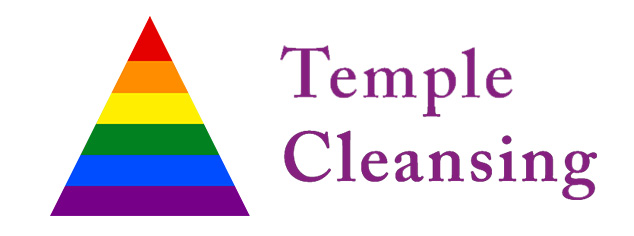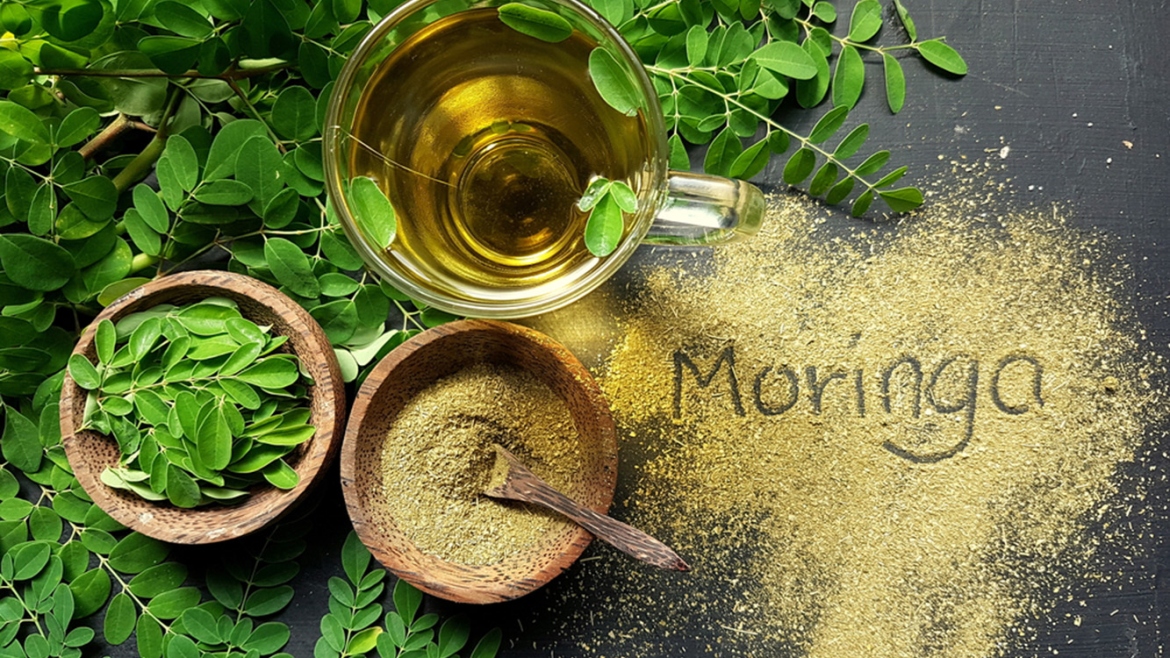About Moringa
Moringa Oleifera is a plant that is native to the sub-Himalayan areas of Pakistan India, Afghanistan and Bangladesh. It is also grown in the tropics. The fruit, flowers, seeds, bark, leaves, leaves, and roots have historically—and still to this day—been used to make medicine.
A recent study, published in PubMed, Moringa Oleifera: ‘A Food Plant with Multiple Medicinal Uses’[1] explains just how useful this multi-faceted plant can be:
“Moringa oleifera Lam (Moringaceae) is a highly valued plant, distributed in many countries of the tropics and subtropics. It has an impressive range of medicinal uses with high nutritional value. Different parts of this plant contain a profile of important minerals, and are a good source of protein, vitamins, beta-carotene, amino acids and various phenolics. The Moringa plant provides a rich and rare combination of zeatin, quercetin, beta-sitosterol, caffeoylquinic acid and kaempferol.
In addition to its compelling water purifying powers and high nutritional value, M. oleifera is very important for its medicinal value. Various parts of this plant such as the leaves, roots, seed, bark, fruit, flowers and immature pods act as cardiac and circulatory stimulants, possess antitumor, antipyretic, antiepileptic, anti-inflammatory, antiulcer, antispasmodic, diuretic, antihypertensive, cholesterol lowering, antioxidant, antidiabetic, hepatoprotective, antibacterial and antifungal activities, and are being employed for the treatment of different ailments in the indigenous system of medicine, particularly in South Asia.”
This review focuses on the detailed phytochemical composition, medicinal uses, along with pharmacological properties of different parts of this multipurpose tree.
Moringa and Curcumin
In another study, ‘Biochemical characterization and anti-inflammatory properties of an isothiocyanate-enriched moringa (Moringa oleifera) seed extract.’[2]
Moringa Oleifera seed extract (MSE), further enriched in its primary phytochemical, curcumin MSE was prepared by incubating ground moringa seeds with water:
“MSE showed a reduction in the carrageenan-induced rat paw edema (33% at 500 mg/kg MIC-1) comparable to aspirin (27% at 300 mg/kg), whereas CTE did not have any significant effect. In vitro, MIC-1 at 1 μM significantly reduced the production of nitric oxide (NO) and at 5 μM, the gene expression of LPS-inducible nitric oxide synthase (iNOS) and interleukins 1β and 6 (IL-1β and IL-6), whereas CEM did not show any significant activity at all concentrations tested. MIC-1 (10μM) was also more effective at upregulating the nuclear factor (erythroid-derived 2)-like 2 (Nrf2) target genes NAD(P)H:quinone oxidoreductase 1 (NQO1), glutathione S-transferase pi 1 (GSTP1), and heme oxygenase 1 (HO1) than the CEM.
Moringa Olifiera showed just as strong anti-inflammatory and antioxidant properties in vivo and in vitro as curcuminoid-enriched turmeric extract (CTE), making them promising botanical leads for the mitigation of inflammatory-mediated chronic disorders.”

Moringa Compared to Broccoli
Moringa oleifera’s nurtional value gets even better: “Moringa ITCs are structurally similar to ITCs derived from cruciferous vegetables of the Brassicaceae family (Order: Brassicales), such as sulforaphane from broccoli and phenethyl isothiocyanate (PEITC) from watercress. However, moringa ITCs are more stable than cruciferous ITCs due to the presence of the sugar moiety (Fig 1) [20].”
You can read more about these findings here.

Even Dr Oz sings our magical Moringa
Moringa is the new buzz word in the health industry as Dr.Oz goes on to explain, its use in third world countries used to give instant nutrition to those starving with hunger.
More from Dr. Oz:
“Traditional medicine uses the roots, leaves and seeds in their medicinal recipes. There isn’t much this plant can’t do! The leaves are the best part of the plant though, because that is where you get high levels of vitamins, like C, A, and B. The leaves can be cooked like spinach, or they can be dried and used in soups or other recipes.
The pods can be eaten like nuts, and the roots can be diced up and used as a sauce similar to our use for horseradish.
Many underdeveloped countries rely on the Moringa to help with their malnutrition problems. Some humanitarian aid organizations use it to help keep people’s nutrition levels up and to keep people from starving.
Traditional medicine uses the roots, leaves and seeds in their medicinal recipes. There isn’t much this plant can’t do! The leaves are the best part of the plant though, because that is where you get high levels of vitamins, like C, A, and B. The leaves can be cooked like spinach, or they can be dried and used in soups or other recipes.
The pods can be eaten like nuts, and the roots can be diced up and used as a sauce similar to our use for horseradish.
Many underdeveloped countries rely on the Moringa to help with their malnutrition problems. Some humanitarian aid organizations use it to help keep people’s nutrition levels up and to keep people from starving.”
In just only one serving of our Moringa leaves there are:
272% daily value of Vitamin A
22% daily value of Vitamin C
41% daily value of Potassium
71% daily value of Iron
61% daily value of Magnesium
125% daily value of Calcium
And:
18 Amino Acids
9 Essential Amino Acids
46 Antioxidants
36 Anti-Inflammatories
Nutrients:
Nutrient |
Moringa
|
Other Foods |
||
| Vitamin A | 6780 mcg | Carrots: 1890 mcg | ||
| Vitamin C | 220 mg | Oranges: 30 mg | ||
| Calcium | 440 mg | Cow’s milk: 120 mg | ||
| Potassium | 259 mg | Bananas: 88 mg | ||
| Protein | 6.7 gm | Cow’s milk: 3.2 gm |
from Nutritive Value of Indian Foods,
by C. Gopalan, et al. Trees for Life
Moringa Oleifera superfood is a complete health product that will not only provide you with the vitamins you need, but also improve your overall health as well.
Here are more Moringa Oleifera benefits:
Boosts energy levels
Improved digestion
Improved immune system function
Improved mood
Lower blood pressure
Protects the stomach lining
Treats stomach ulcers symptoms
Moringa Leaves are full of essential disease-preventing nutrients:
- Proteins, the basic building blocks of all our body cells
- Vitamin A, which acts as a shield against eye disease, skin disease, heart ailments, diarrhea, and many other diseases.
- Calcium, which builds strong bones and teeth, and helps prevent osteoporosis.
- Vitamin C, fighting a host of illnesses including colds and flu.
- Potassium, essential for the functioning of the brain and nerves.
Disclaimer:
It’s always advised to speak with your treating physician before adding any new mineral, vitamin or supplements to your wellness toolkit. In most cases, adding Moringa Oleifera to your diet could be best for you and your family’s specific needs.

Click here for Moringa Recipes and Ideas [insert Link to Recipe page… and link from landing page
References
[1]Anwar F, Latif S, Ashraf M, Gilani AH, ‘Moringa oleifera: a food plant with multiple medicinal uses’, PubMed, https://www.ncbi.nlm.nih.gov/pubmed/17089328
[2] Jaja-Chimedza, Graf BL, Simmler C, Kim Y, Pauli GF, Raskin I, August 2017, PubMed, ‘Biochemical characterization and anti-inflammatory properties of an isothiocyanate-enriched moringa (Moringa oleifera) seed extract. https://www.ncbi.nlm.nih.gov/pubmed/28792522
[3] ‘Do Not Try Moringa Oleifera Until You Read the Facts About It’, Ideal Bite, 2018, Dr Oz article, http://idealbite.com/do-not-try-moringa-oleifera-until-you-read-the-facts-about-it/
[4]Trees for Life, ‘Moringa Nutritional Information’, 2018, https://treesforlife.org/our-work/our-initiatives/moringa/nutritional-information
’


